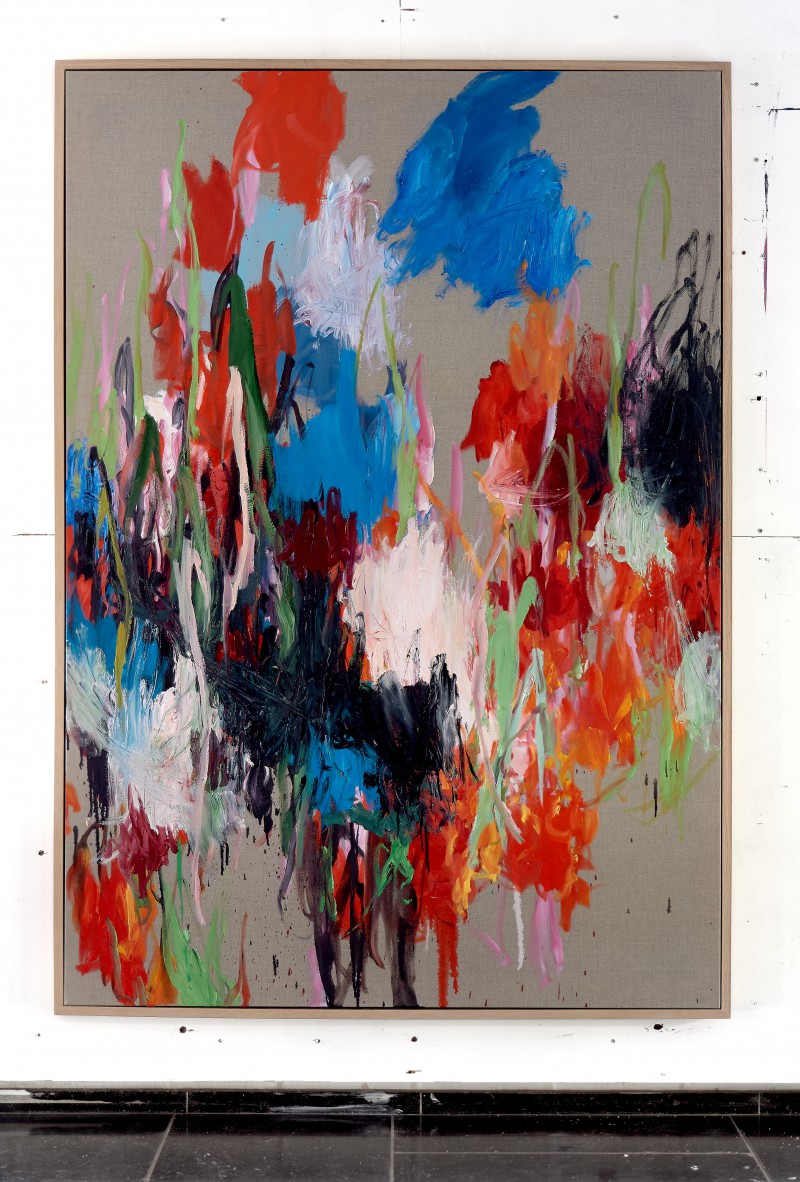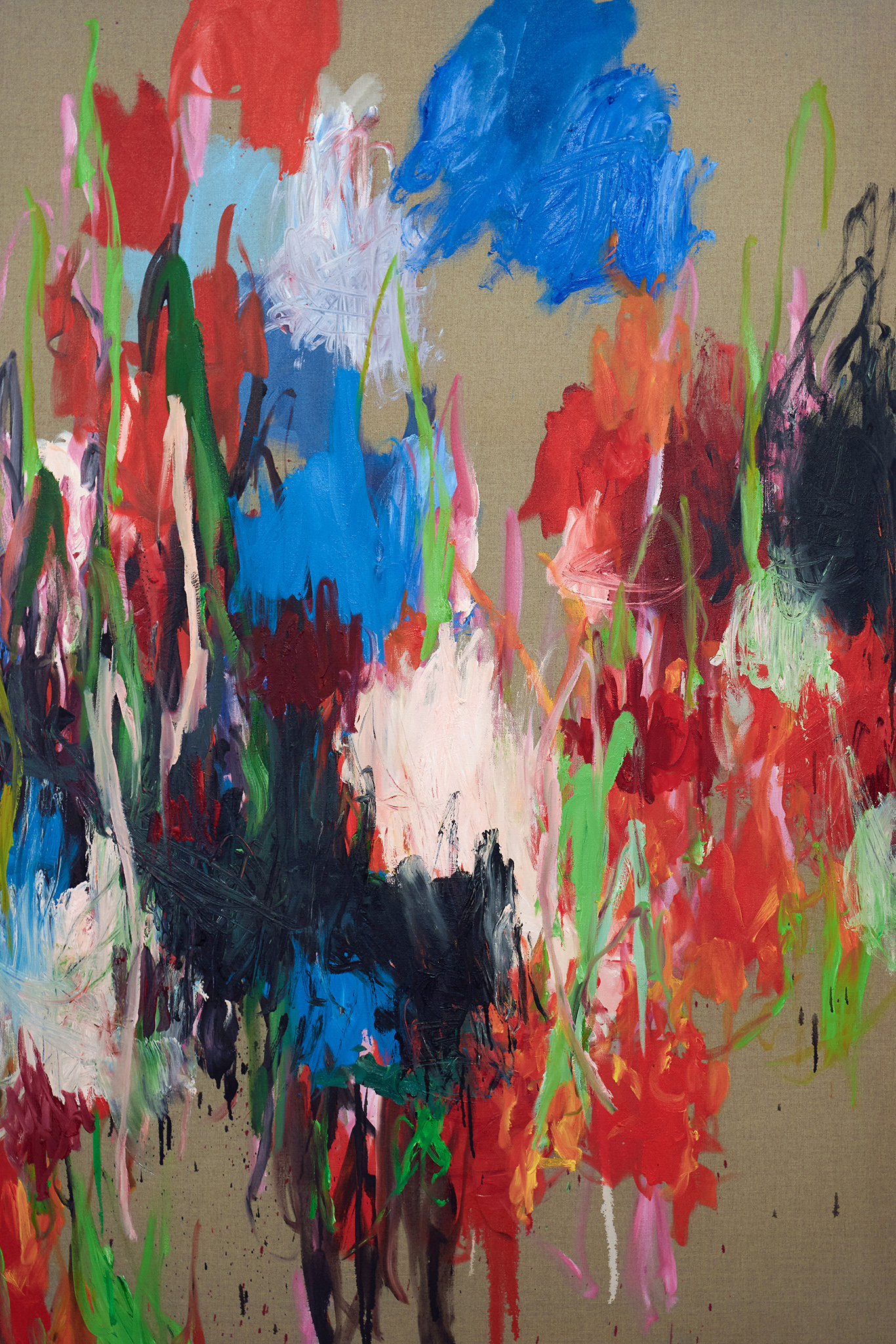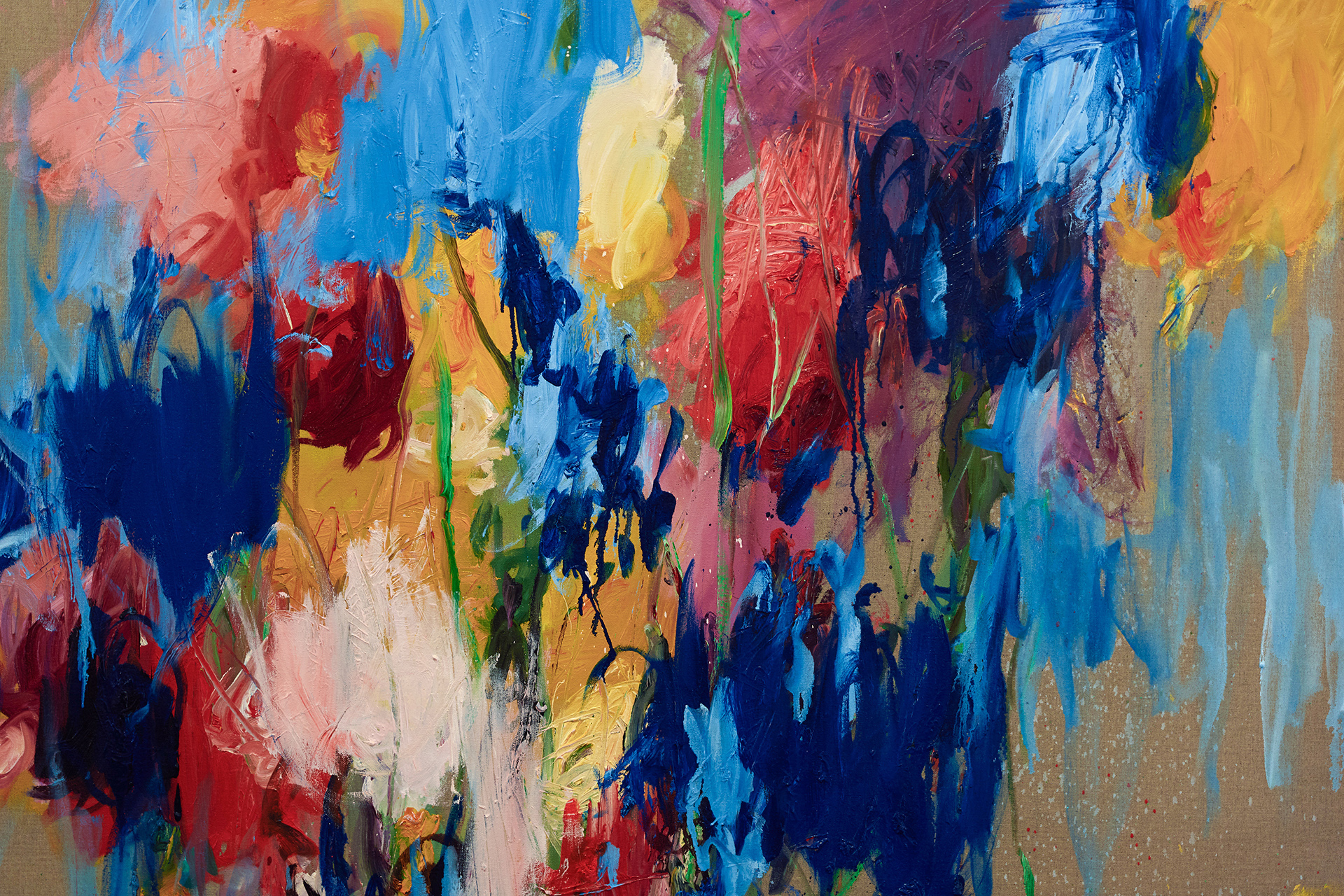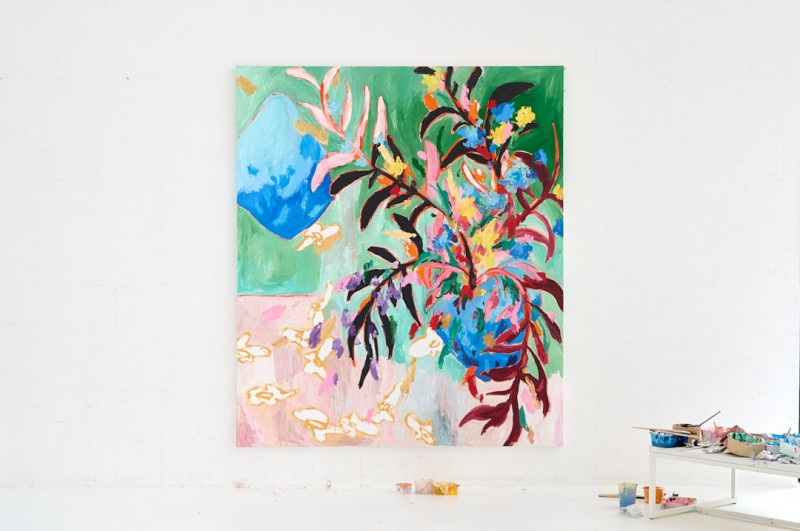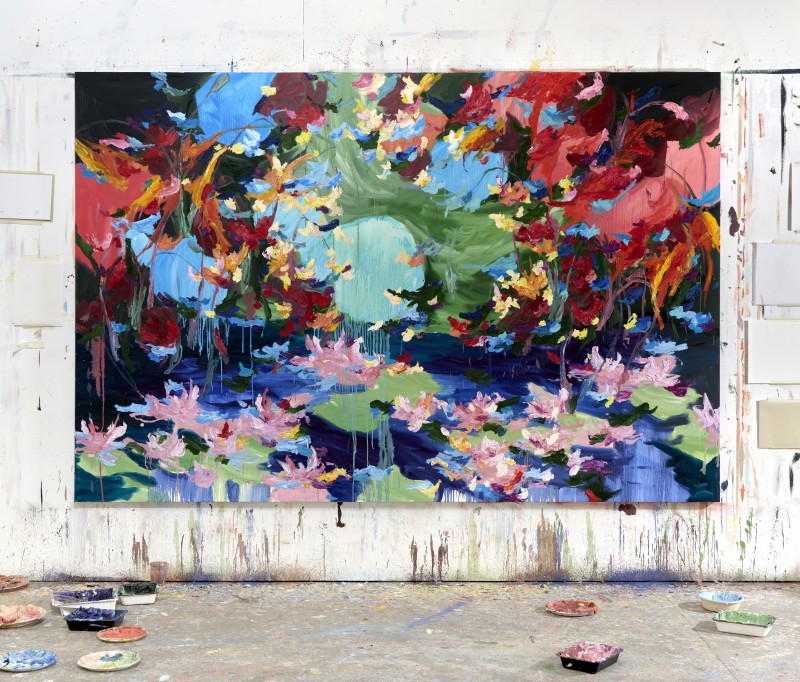
Wildflower Fields — Atelier, Sint-Martens-Latem, Belgium
Linen paintings
Part of the evolution: Linen I, II, III. Oil paint on brown canvas, solid oak frame
For a diverse garden, it is important to have a wide variety of plants. Our beloved wildflowers have attained their colour because they have co-evolved with their pollinators. They have adapted specific shapes and display certain colours that attracts them to their blooming flower. For example, butterflies prefer red flowers that have a platform for landing.
“Bees are attracted to pink, yellow, blue, and distinctly marked flowers, many of which reflect ultraviolet light, sometimes in a bull’s-eye pattern.” (Williams, E.H. 2005. Pg 2) Flies, which have poorer vision, prefer saucer-shaped white flowers. “Night feeding moths are attracted to heavy fragrance, but because colours are not visible at night, moth-pollinated flowers are usually pale green or white.” (Williams, E.H. 2005. Pg 2) Bats choose large, pale, and fragrant flowers while beetles go for brightly colored flowers usually with an unpleasant or carrion scented fragrance. “Hummingbirds often choose red, tubular, hanging flowers with abundant nectar.” (Williams, E.H. 2005. Pg 2)
Aurora for Art d'Egypte
Siberica, a Wildflower Fields painting
In Quinze's oil paintings, the artist is on a constant quest to unveil the mesmerizing interplay...
Porrifolius, a Wildflower Fields painting
Porrifolius, also known as Purple Morningstar, is a flower that can transform into different...

